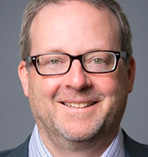NAS Award for the Industrial Application of Science

About the NAS Award for the Industrial Application of Science
Awarded for original scientific work of intrinsic scientific importance and with significant, beneficial applications in industry. The recipient is awarded a $25,000 prize. Established by the IBM Corporation in honor of Ralph E. Gomory.
Most Recent Recipient
 |
Geoffrey W. Coates, Cornell University, will receive the 2023 NAS Award for the Industrial Application of Science.
Coates’ discoveries have revolutionized polymer recycling, materials for green hydrogen generation, and the synthesis of sustainable plastics. He is widely recognized for his discovery of efficient synthetic processes to make important high-performance plastics from biorenewable resources.
Read more about Coates' work»
Watch Coates’ acceptance speech»
Award History
Previous recipients of the NAS Award for the Industrial Application of Science continue to achieve outstanding advancements in their fields. Five recipients have been honored with a National Medal of Science, and one recipient has received a Nobel Prize in Physics (Nakamura 2014).
Recipients:
Geoffrey W. Coates (2023, material sciences)
For his discovery of efficient synthetic processes to make important high-performance materials from biorenewable resources; for his design of new polymeric materials for safe and practical energy conversion and storage applications; and for his invention of viable approach for the recycling of the world’s plastic waste.
Read more about Coates' work»
Watch Coates’ acceptance speech»
Shuji Nakamura (2020, sustainability)
For his pioneering discoveries, synthesis and commercial development of Gallium nitride LEDs and their use in sustainable solid-state light sources, which are reducing global greenhouse gas emissions while also reducing costs to those adopting this technology.
Read more about Nakamura's work»
Watch Nakamura's acceptance speech»
Robert H. Dennard (2017, computer science)
For seminal contributions in the field of Microelectronics for the invention of Dynamic Random Access Memory (DRAM), and CMOS scaling.
Read more about Dennard's work»
Watch Dennard's acceptance speech»
James C. Liao (2014, bio-energy)
For developing the technologies that enable the production of higher alcohols as drop-in fuel from sugars, cellulose, waste protein, or carbon dioxide.
Watch Liao's acceptance speech»
H. Boyd Woodruff (2011, agriculture)
For leading the development of multiple antibiotics, vitamin B12, and the avermectins, the latter revolutionizing parasite treatment in livestock and humans.
Robert T. Fraley (2008)
For developing technologies that enabled the production of the world's first transgenic crops. These modified plants have increased productivity, reduced chemical use, and profoundly changed global agriculture.
Philip Needleman (2005)
For his groundbreaking contributions to our understanding of the metabolism of arachidonic acid in physiology and pathophysiology, which generates prostacyclin and thromboxane.
J. Craig Venter (2002)
For his vision in using expressed sequence tags in genetic analyses, his unique contributions to the sequencing of microbial genomes, and his leadership in mobilizing new methods and resources for sequencing the human genome.
Ralph F. Hirschmann (1999)
For his ingenuity in creative chemical design and synthesis directed to the commercial production of numerous essential pharmaceuticals, such as anti-inflammatory steroids and anti-hypertensive compounds.
John H. Sinfelt (1996)
For his discovery of the principle of bimetallic cluster catalysis and the consequent development of the catalyst widely used in making lead-free gasoline.
Nick Holonyak (1993)
For his profound impact on industry and on the daily lives of the people around the world through his prolific inventions in the area of semiconductor materials and devices, including practical light-emitting diodes.
Carl Djerassi (1990)
While making pioneering contributions to steroid chemistry, he invented the first successful oral contraceptive, then led the team that brought it to market and won its public acceptance.

